Anthurium clarinervium is a plant lover’s dream come true. With its bold, heart-shaped leaves and striking white veins, it’s no wonder this tropical beauty is a favorite among indoor gardeners. Often called the velvet cardboard anthurium, this plant brings an exotic touch to your home with its lush foliage and unique appearance.
But what makes it even more special is how rewarding it can be to care for. In this guide, we’ll explore everything you need to know to help your Anthurium clarinervium thrive, from light and water needs to pest control and propagation tips. Let’s dive in!
What Is Anthurium Clarinervium?

Anthurium clarinervium is a tropical plant native to the forests of southern Mexico. It belongs to the Araceae family, which is home to many other popular houseplants like monstera and philodendron.
This evergreen perennial stands out for its thick, velvety leaves shaped like hearts and adorned with bright, contrasting veins. Its leaves can grow up to 8 to 10 inches long, making it a stunning centerpiece in any plant collection.
Though it’s primarily grown for its foliage, Anthurium clarinervium can also produce small, greenish-white flowers on a spadix. While the blooms aren’t the plant’s main attraction, they add an extra layer of charm.
Why Choose Anthurium Clarinervium?
If you’re looking for a statement plant that’s as unique as it is beautiful, Anthurium clarinervium is an excellent choice. Its bold leaves make it a standout in any room, and with the right care, it can last for years. This plant is perfect for those who want to add a touch of tropical elegance to their indoor spaces.
Moreover, caring for Anthurium clarinervium can be a deeply satisfying experience. Watching its leaves grow and unfurl is a joy for plant enthusiasts, and once you’ve mastered its care routine, you’ll find it’s not as demanding as it might seem at first.
How to Care for Anthurium Clarinervium
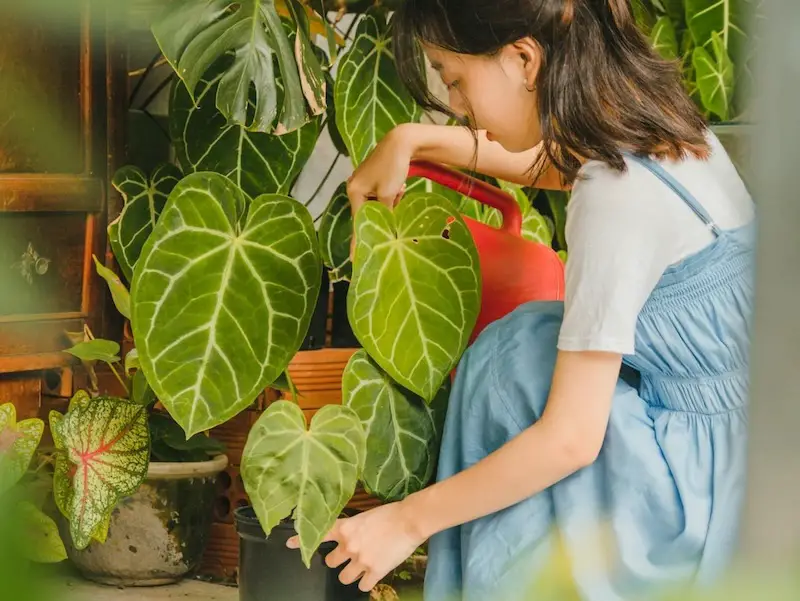
1. Light Requirements
Anthurium clarinervium thrives in bright, indirect light. Direct sunlight can scorch its delicate leaves, causing them to lose their vibrant color or develop unsightly brown spots. Place your plant near an east- or north-facing window where it can enjoy plenty of natural light without being exposed to harsh rays.
If your home doesn’t get much natural light, you can use a grow light to supplement. Just make sure the light isn’t too intense and doesn’t heat up the leaves.
2. Ideal Soil
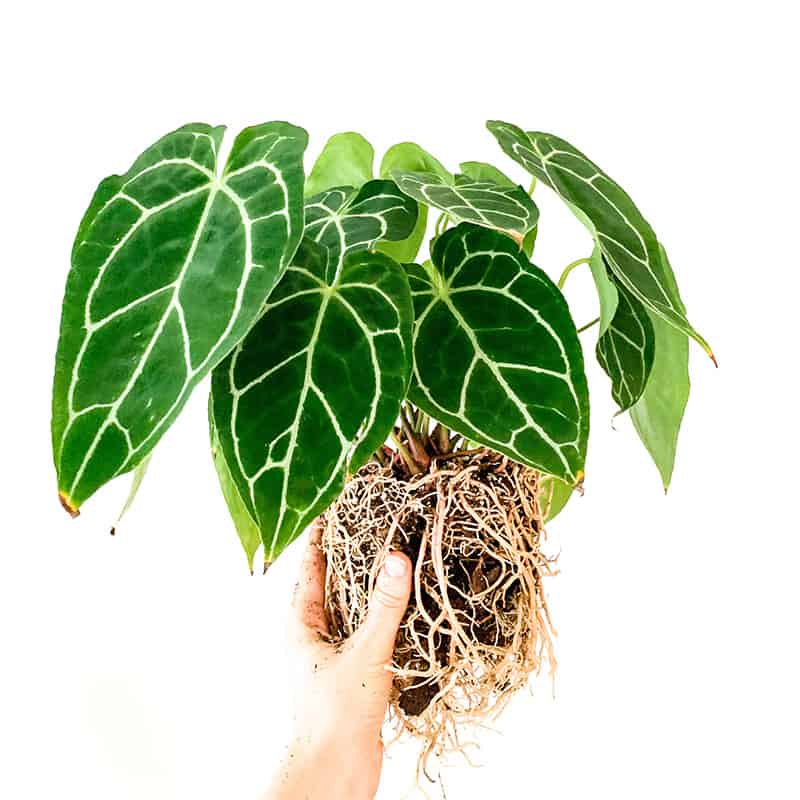
This plant prefers a well-draining, porous potting mix that allows air to circulate around the roots. A mix of orchid bark, perlite, and high-quality potting soil works well. You can also add some charcoal to help with drainage and prevent root rot.
Avoid heavy soils that retain too much moisture, as they can lead to waterlogging and fungal diseases. The goal is to mimic the plant’s natural habitat, where it grows in loose, airy soil.
3. Watering Needs
Watering Anthurium clarinervium requires a delicate balance. The soil should stay slightly moist but not soggy. Allow the top inch of soil to dry out before watering again. Overwatering can cause root rot, while underwatering may lead to droopy, dry leaves.
During the growing season (spring and summer), your plant will need more frequent watering. In fall and winter, reduce the frequency to match the plant’s slower growth rate.
4. Temperature and Humidity
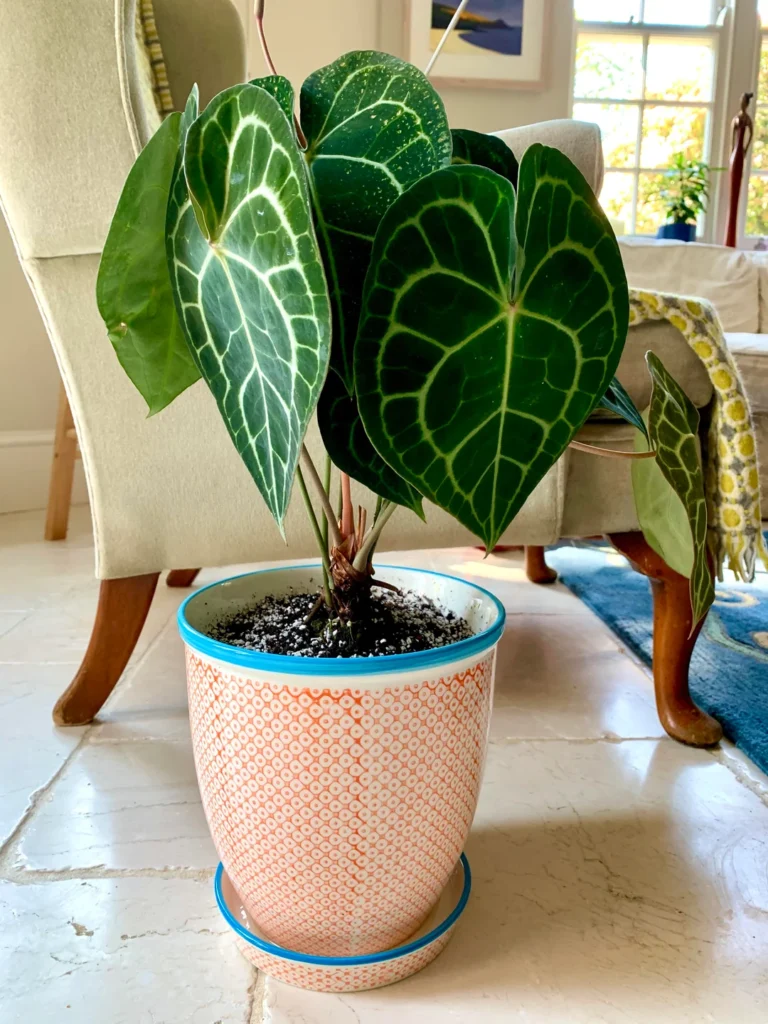
As a tropical plant, Anthurium clarinervium loves warmth and humidity. Keep it in a room where the temperature stays between 65°F and 85°F (18°C to 29°C). Avoid exposing it to drafts, sudden temperature changes, or cold air.
To maintain high humidity levels, consider the following tips:
- Place a humidifier near your plant.
- Group it with other humidity-loving plants.
- Use a pebble tray filled with water under the pot.
- Mist the leaves occasionally with room-temperature water.
5. Fertilization
During the growing season, feed your Anthurium clarinervium with a balanced liquid fertilizer diluted to half strength every two to four weeks. Avoid over-fertilizing, as it can lead to salt buildup in the soil, which harms the roots. Reduce or stop feeding during the winter months when the plant’s growth slows.
6. Repotting
Repot your Anthurium clarinervium every two to three years or when you notice the roots outgrowing the pot. Choose a container that is slightly larger than the current one and has good drainage. Repotting is also an excellent opportunity to refresh the soil and check for any root problems.
7. Pruning and Maintenance
Prune your plant to remove any yellowing or damaged leaves. This not only keeps the plant looking tidy but also redirects its energy to healthy growth. Use clean, sharp scissors or pruning shears to make precise cuts and avoid spreading diseases.
Related Topics:
Propagation of Anthurium Clarinervium
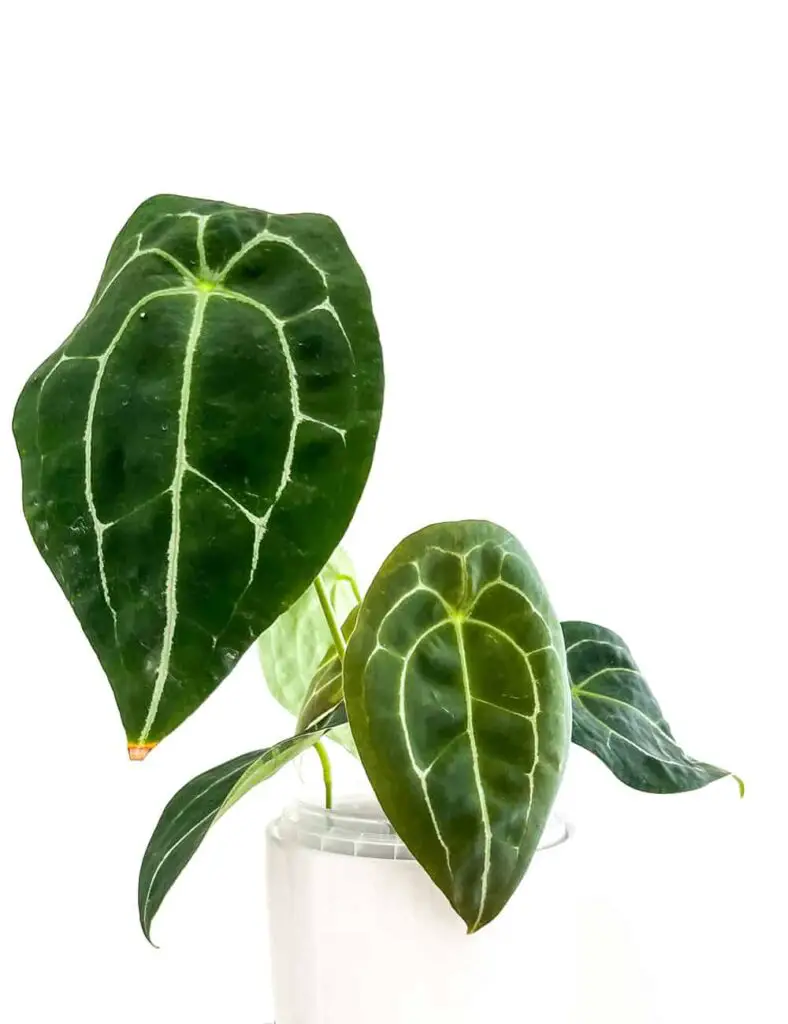
Anthurium clarinervium is usually propagated through division. Here’s a step-by-step guide:
Timing: The best time to propagate is during spring or early summer when the plant is actively growing.
Remove the Plant: Gently remove the plant from its pot and shake off excess soil.
Divide: Look for natural divisions or offshoots with their own roots. Use a clean knife to separate them if needed.
Replant: Place the divisions in individual pots filled with the appropriate potting mix.
Water: Water the newly potted plants lightly and place them in a warm, humid spot with indirect light.
Common Problems and Solutions
1. Pests
Anthurium clarinervium can attract common houseplant pests like spider mites, mealybugs, and aphids. Regularly inspect your plant for signs of infestation, such as webbing, sticky residue, or tiny insects.
Solution:
- Wipe the leaves with a damp cloth.
- Use insecticidal soap or neem oil to treat the plant.
- Isolate the affected plant to prevent the pests from spreading.
2. Yellowing Leaves
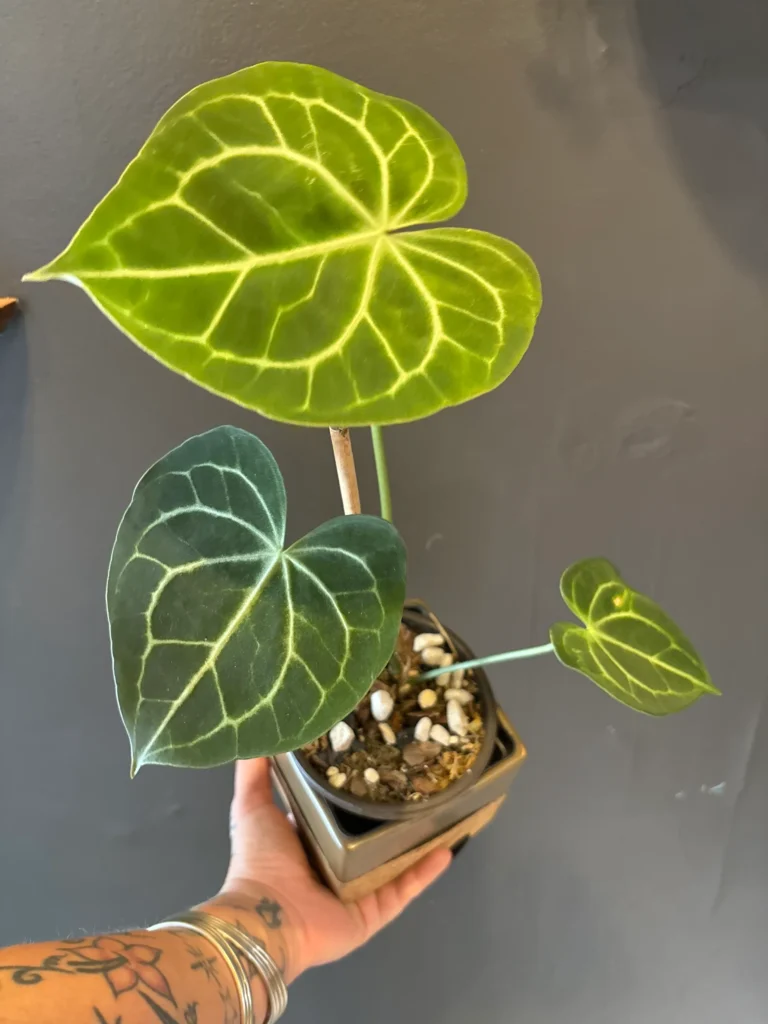
Yellow leaves can be a sign of overwatering, underwatering, or nutrient deficiency.
Solution:
- Check the soil moisture and adjust your watering routine.
- Fertilize during the growing season to provide essential nutrients.
3. Brown Leaf Tips
Brown tips often indicate low humidity or over-fertilization.
Solution:
- Increase humidity levels using a humidifier or pebble tray.
- Reduce fertilizer application and flush the soil with water to remove salt buildup.
Benefits of Growing Anthurium Clarinervium
- Air Purification: Like many tropical plants, Anthurium clarinervium can help improve indoor air quality by filtering toxins.
- Aesthetic Appeal: Its bold, patterned leaves make it a standout piece in any room.
- Stress Relief: Caring for plants can reduce stress and improve mental well-being.
Final Thoughts
Anthurium clarinervium is a showstopper that’s worth the effort it takes to care for. Its striking foliage and exotic vibe make it a rewarding addition to any indoor plant collection. With the right light, soil, and humidity, you’ll enjoy watching this tropical beauty thrive.
Whether you’re a seasoned plant parent or a beginner looking to expand your collection, Anthurium clarinervium is a fantastic choice to elevate your indoor space. So why wait? Bring home this velvet-leafed wonder and let it transform your home into a tropical paradise.

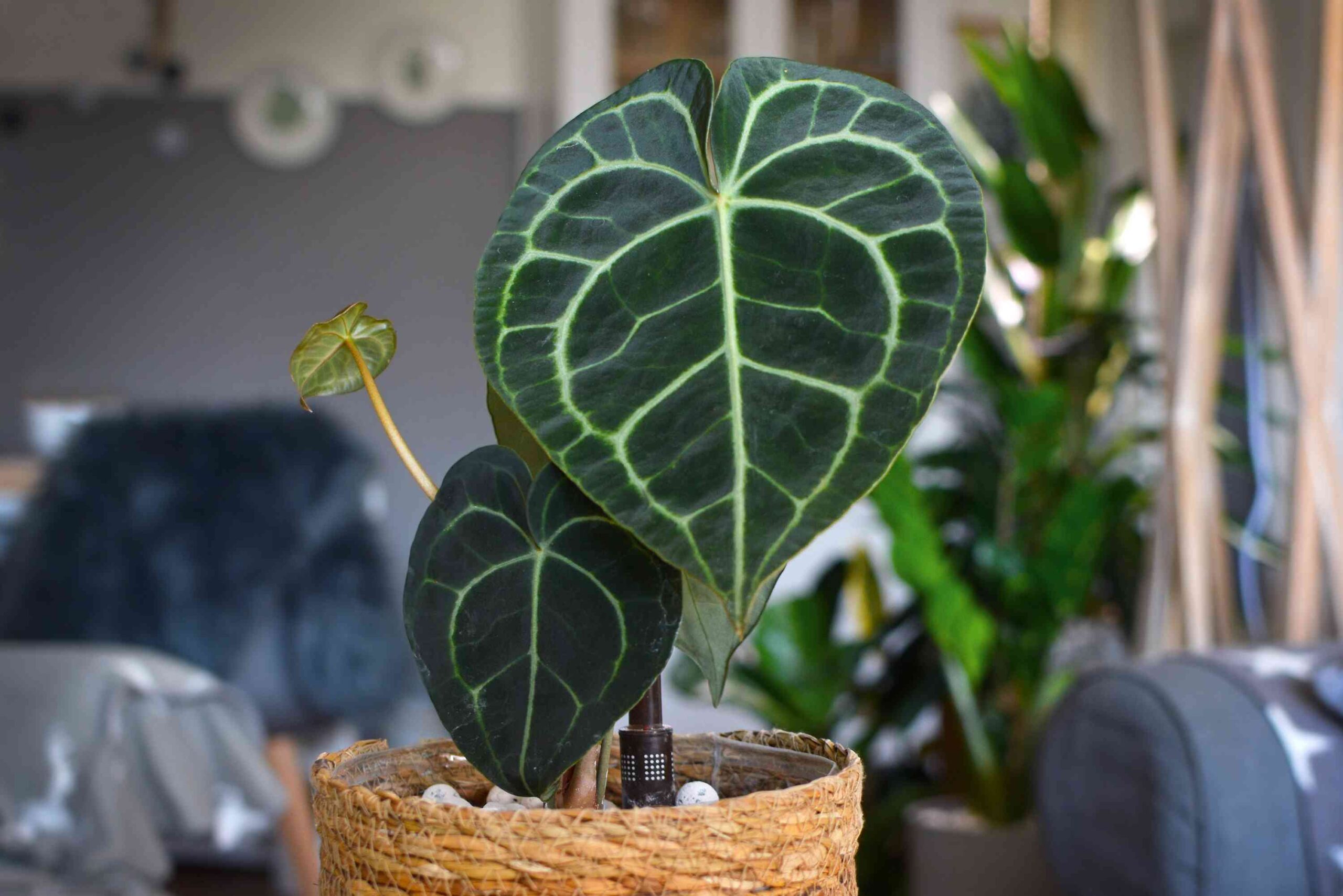
1 thought on “Growing Anthurium Clarinervium This Season: Your Next Houseplant”